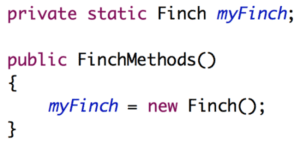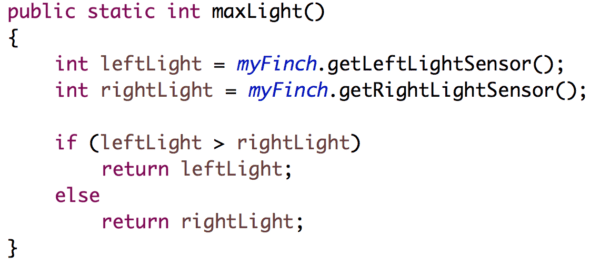In the previous lessons, you have learned to use the existing Finch methods to write your programs. In this lesson, you will write your own methods to make the Finch do new things. To write a method that uses the Finch, you will often want to declare the Finch as a private static variable. You should create the Finch object inside the class constructor. This is shown below for a class called FinchMethods.
Register to receive free access to all teacher materials.






